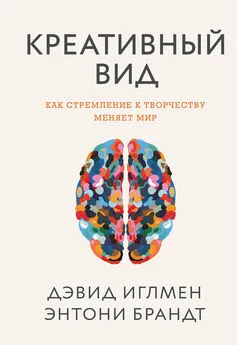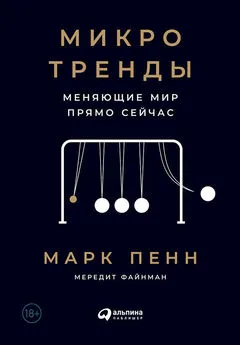Элхонон Голдберг - Креативный мозг [Как рождаются идеи, меняющие мир] [litres]
- Название:Креативный мозг [Как рождаются идеи, меняющие мир] [litres]
- Автор:
- Жанр:
- Издательство:Литагент 5 редакция «БОМБОРА»
- Год:2019
- Город:Москва
- ISBN:978-5-04-105057-3
- Рейтинг:
- Избранное:Добавить в избранное
-
Отзывы:
-
Ваша оценка:
Элхонон Голдберг - Креативный мозг [Как рождаются идеи, меняющие мир] [litres] краткое содержание
Какова природа творчества? Какая работа разума скрывается за его мистикой? Каковы эволюционные корни креативности? В книге нейробиолога и нейропсихолога Элхонона Голдберга эти и другие вопросы рассматриваются как с научной, так с исторической и культурологической точек зрения, превращаясь в масштабное и увлекательное исследование. Опираясь на результаты последних открытий и исследований мозга, а также на собственные идеи и гипотезы, Голдберг приходит к оригинальному, убедительному и даже провокационному пониманию природы творчества и креативности. Читатель совершит удивительное путешествие сквозь эпохи и страны: от античности до далекого будущего, от Западной Европы до Юго-Восточной Азии. Автор делает смелые прогнозы о перспективных направлениях творчества и инноваций, объясняя их биологические и культурные истоки, рассказывает о том, как они сформируют общество будущего и изменят способы развития человеческого мозга.
Креативный мозг [Как рождаются идеи, меняющие мир] [litres] - читать онлайн бесплатно ознакомительный отрывок
Интервал:
Закладка:
3. H. Hecaen and M. L. Albert, Human Neuropsychology, Hardcover (New York: John Wiley & Sons Inc., 1978); A. Luria, Higher Cortical Functions in Man (New York: Basic Books, 1980); E. Goldberg, «Associative Agnosias and the Functions of the Left Hemisphere», Journal of Clinical and Experimental Neuropsychology 12 (1990): 467–484.
4. A. Luria, Higher Cortical Functions in Man (New York: Basic Books, 1980); E. Goldberg and W. Barr, «Three Possible Mechanisms of Unawareness of Deficit», in Awareness of Deficit: Theoretical and Clinical Issues, Eds. G. Prigatano and D. Schacter (New York: Oxford University Press, 1991): 152–175; R. C. Leiguarda and C. D. Marsden, «Limb Apraxias: Higher-Order Disorders of Sensorimotor Integration», Brain 123 (2000): 860–879.
5. O. Sacks, The Man Who Mistook His Wife for a Hat: And Other Clinical Tales (New York: Touchstone, 1998).
6. J. Capgras and J. Reboul-Lachaux, «Illusion des ‘sosies’ dans un délire systematize chronique», Bulletin de la Société Clinique de Médicine Mentale 2 (1923): 6—16.
7. N. Chomsky, Language and Mind, 3rd edn. (Cambridge, UK: Cambridge University Press, 2006); N. Chomsky, Syntactic Structures (Eastford, NJ: Martino Fine Books, 2015).
8. R. W. Byrne, «Human Cognitive Evolution», in The Descent of Man: Psychological Perspectives of Hominid Evolution, Eds. M. C. Corbalis and S. E. G. Lea (New York: Oxford University Press, 1999): 71–87.
9. N. Geschwind and W. Levitsky, «Human Brain: Left-Right Asymmetries in Temporal Speech Region», Science 161 (1968): 186–187; A. L. Foundas, A. Weisberg, C. A. Browning, and D. R. Weinberger, «Morphology of the Frontal Operculum: A Volumetric Magnetic Resonance Imaging Study of the Pars Triangularis», Journal of Neuroimaging 2001): 153–159.
10. A. Luria, Higher Cortical Functions in Man, 2nd edn. (New York: Basic Books, 1980); E. Goldberg, «The Gradiental Approach to Neocortical Functional Organization», Journal of Clinical and Experimental Neuropsychology 11 (1989): 489–517.
11. A. Martin, C. L. Wiggs, L. G. Ungerleider, and J. V. Haxby, «Neural Correlates of Category-Specific Knowledge», Nature 379 (1996): 649–652; A. Martin, J. V. Haxby, F. M. Lalonde, C. L. Wiggs, and L. G. Ungerleider, «Discrete Cortical Regions Associated with Knowledge of Color and Knowledge of Action», Science 270 (1995): 102–105.
12. M. Cappelletti, F. Fregni, K. Shapiro, A. Pascual-Leone, and A. Caramazza, «Processing Nouns and Verbs in the Left Frontal Cortex: A Transcranial Magnetic Stimulation Study», Journal of Cognitive Neuroscience 20 (2008): 707–720.
13. S. M. Kosslyn, «Seeing and Imagining in the Cerebral Hemispheres: A Computational Approach», Psychological Review 94 (1987): 148–175.
14. For a comprehensive review of the subject, see: L. S. Rogers, G. Vallortigara, and R. J. Andrew, Divided Brains: The Biology and Behaviour of Brain Asymmetries (Cambridge, UK: Cambridge University Press, 2013).
15. Y. Yamazakia, U. Austb, L. Huberb, M. Hausmanna, and O. Güntürkün, «Lateralized Cognition: Asymmetrical and Complementary Strategies of Pigeons During Discrimination of the Human Concept», Cognition 104 (2007): 315–344.
16. K. Folta, B. Diekamp, and O. Güntürkün, «Asymmetrical Modes of Visual Bottom-Up and Top-Down Integration in the Thalamic Nucleus Rotundus of Pigeons», Journal of Neuroscience 27 (2004): 9475–9485.
17. J. W. Peirce and K. M. Kendrick, «Functional Asymmetry in Sheep Temporal Cortex», Neuroreport 13 (2002): 2395–2399; J. W. Peirce, A. E. Leigh, A. P. DaCosta, and K. M. Kendrick, «Human Face Recognition in Sheep: Lack of Configurational Coding and Right Hemisphere Advantage», Behavioural Processes 55 (2001): 13–26; J. W. Peirce, A. E. Leigh, and K. M. Kendrick, «Configurational Coding, Familiarity and the Right Hemisphere Advantage for Face Recognition in Sheep», Neuropsychologia 38 (2000): 475–483.
18. K. Guo, K. Meints, C. Hall, S. Hall, and D. Mills, «Left Gaze Bias in Humans, Rhesus Monkeys and Domestic Dogs», Animal Cognition 12 (2009): 409–418.
19. A. Ghazanfar, D. Smith-Rhorberg, and M. D. Hauser, «Role of Temporal Cues in Rhesus Monkey Vocal Recognition: Orienting Asymmetries to Reversed Calls», Brain Behavior and Evolution 58 (2001): 163–172; M. D. Beecher, M. R. Petersen, S. R. Zoloth, D. B. Moody, and W. C. Stebbins, «Perception of Conspecific Vocalizations by Japanese Macaques. Evidence for Selective Attention and Neural Lateralization», Brain Behavior and Evolution 16 (1979): 443–460; H. E. Heffner and R. S. Heffner, «Temporal Lobe Lesions and Perception of Species Specific Vocalizations by Macaques», Science 226 (1984): 75–76.
20. R. Hamilton and B. A. Vermeire, «Complementary Hemispheric Specialization in Monkeys», Science 242 (1988): 1691–1694.
21. N. Kriegeskorte, M. Mur, D. A. Ruff, R. Kiani, J. Bodurka, H. Esteky, K. Tanaka, and P. A. Bandettini, «Matching Categorical Object Representations in Inferior Temporal Cortex of Man and Monkey», Neuron 60 (2008): 1126–1141.
22. E. Goldberg, «The Gradiental Approach to Neocortical Functional Organization», Journal of Clinical and Experimental Neuropsychology 11 (1989): 489–517; E. Goldberg, «Higher Cortical Functions in Humans: The Gradiental Approach», in Contemporary Neuropsychology and the Legacy of Luria, Ed. E. Goldberg (Mahwah, NJ: Lawrence Erlbaum, 1990): 229–276.
23. G. Huth, S. Nishimoto, A. T. Vu, and J. L. Gallant, «A Continuous Semantic Space Describes the Representation of Thousands of Object and Action Categories Across the Human Brain», Neuron 76 (2012): 1210–1224.
24. G. A. Miller, «WordNet: A Lexical Database for English», Communications of the ACM 38 (1995): 39–41. У меня есть личный долг благодарности покойному доктору Миллеру, который дружески поддерживал меня в середине 1970-х годов, когда я проводил исследования в качестве приглашенного ученого в Университете Рокфеллера в Нью-Йорке, где у доктора Миллера была лаборатория в то время.
25. G. Huth, W. A. De Heer, T. L. Griffiths, F. E. Theunissen, and J. L. Gallant, «Natural Speech Reveals the Semantic Maps That Tile Human Cerebral Cortex», Nature 532 (2016): 453–458.
26. L. Miller, J. Cummings, F. Mishkin, K. Boone, F. Prince, M. Ponton, and C. Cotman, «Emergence of Artistic Talent in Frontotemporal Dementia», Neurology 51 (1998): 978–982.
27. W. Snyder, E. Mulcahy, J. L. Taylor, D. J. Mitchell, P. Sachdev, and S. C. Gandevia, «Savant-like Skills Exposed in Normal People by Suppressing the Left Fronto-temporal Lobe», Journal of Integrative Neuroscience 2 (2003): 149–158; A. Snyder, «Explaining and Inducing Savant Skills: Privileged Access to Lower Level, Less-processed Information», Philosophical Transactions of the Royal Society of London, B: Biological Sciences 364 (2009): 1399–1405.
28. E. Goldberg, D. Roediger, N. E. Kucukboyaci, C. Carlson, O. Devinsky, R. Kuzniecky, E. Halgren, and T. Thesen, «Hemispheric Asymmetries of Cortical Volume in the Human Brain», Cortex 49 (2013): 200–210; M. Harciarek, D. Malaspina, T. Sun, and E. Goldberg, «Schizophrenia and Frontotemporal Dementia: Shared Causation?» International Review of Psychiatry, 25 (2013): 168–177.
29. T. Q. Wu, Z. A. Miller, B. Adhimoolam, D. D. Zackey, B. K. Khan, R. Ketelle, K. P. Ranki, and B. L. Miller, «Verbal Creativity in Semantic Variant Primary Progressive Aphasia», Neurocase 21 (2015): 73–78.
1. J. R. Hayes, «Cognitive Processes in Creativity», in Handbook of Creativity, Eds. J. A. Glover, R. R. Ronning, and C. R. Reynolds (New York: Plenum Press, 1989): 135–145; D. K. Simonton, «Creative Development as Acquired Expertise: Theoretical Issues and Empirical Tests», Developmental Review 20 (2000): 283–318.
2. M. Csikszentmihalyi, Creativity: Flow and the Psychology of Discovery and Invention (New York: HarperCollins, 1996).
3. Более подробная информация, см: E. Goldberg, The Executive Brain: Frontal Lobes and the Civilized Mind (New York: Oxford University Press, 2009), and E. Goldberg, The New Executive Brain: Frontal Lobes in a Complex World (New York: Oxford University Press, 2009).
4. J. M. Fuster, The Neuroscience of Freedom and Creativity: Our Predictive Brain (Cambridge, UK: Cambridge University Press, 2013).
5. D. H. Ingvar, «Memory of the Future: An Essay on the Temporal Organization of Conscious Awareness», Human Neurobiology 4 (1985): 127–136.
6. N. Chomsky, Language and Mind, 3rd edn. (Cambridge, UK: Cambridge University Press, 2006); N. Chomsky, Syntactic Structures (Berlin, Germany: De Gruyter Mouton, 1957); N. Chomsky, Aspects of the Theory of Syntax (Cambridge, MA: MIT Press, 1965).
7. E. Goldberg and R. Bilder, «Frontal Lobes and Hierarchic Organization of Neurocognitive Control», in Frontal Lobes Revisited, Ed. E. Perecman (New York: IRBN, 1987): 159–187.
8. D. Everett, «Cultural Constraints on Grammar and Cognition in Pirahã», Current Anthropology 46 (2005): 621–646; A. Nevins, D. Pesetsky, and C. Rodrigues, «Evidence and Argumentation: A Reply to Everett», Language 85 (2009): 671–681.
9. Y. N. Harari, Sapiens: A Brief History of Humankind (New York: Harper, 2015).
10. P. Shipman, The Invaders: How Humans and Their Dogs Drove Neanderthals to Extinction, 3rd edn. (Cambridge, MA: Belknap Press, 2015).
11. S. L. Bressler and V. Menon, «Large-Scale Brain Networks in Cognition: Emerging Methods and Principles», Trends in Cognitive Sciences 14 (2010): 277–290; M. D. Fox, A. Z. Snyder, J. L. Vincent, M. Corbetta, D. C. Van Essen, and M. E. Raichle, «The Human Brain Is Intrinsically Organized Into Dynamic, Anticorrelated Functional Networks», Proceedings of the National Academy of Sciences 102 (2005): 9673–9678.
12. D. Mantini, M. Corbetta, G. L. Romani, G. A. Orban, and W. Vanduffel, «Evolutionarily Novel Functional Networks in the Human Brain?» The Journal of Neuroscience 33 (2013): 3259–3275; R. N. Spreng, W. D. Stevens, J. P. Chamberlain, A. W. Gilmore, and D. L. Schacter, «Default Network Activity, Coupled with the Frontoparietal Control Network, Supports Goal-Directed Cognition», Neuroimage 53 (2010): 303–317.
13. Более подробное описание понятия «функциональная система» в кн.: A. R. Luria, Higher Cortical Functions in Man (New York: Basic Books, 1980).
14. Более подробное обсуждение расцвета когнитивной «модульности» см. в кн.: E. Goldberg, «The Rise and Fall of Modular Orthodoxy», Journal of Clinical and Experimental Neuropsychology 17 (1995): 193–208.
15. D. Wang, R. L. Buckner, and X. H. Liu, «Functional Specialization in the Human Brain Estimated by Intrinsic Hemispheric Interaction», The Journal of Neuroscience 34 (2014): 12341—12352.
16. A. Ardestani, W. Shen, F. Darvas, A. W. Toga, and J. M. Fuster, «Modulation of Frontoparietal Neurovascular Dynamics in Working Memory», Journal of Cognitive Neuroscience 28 (2016): 379–401.
17. R. L. Buckner, J. R. Andrews-Hanna, and D. L. Schacter, «The Brain’s Default Network Anatomy, Function, and Relevance to Disease», Annals of the New York Academy of Sciences 1124 (2008): 1—38.
18. A. R. Luria, Higher Cortical Functions in Man (New York: Basic Books, 1980); E. Goldberg, «The Gradiental Approach to Neocortical Functional Organization», Journal of Clinical and Experimental Neuropsychology 11 (1989): 489–517.
Читать дальшеИнтервал:
Закладка:
![Обложка книги Элхонон Голдберг - Креативный мозг [Как рождаются идеи, меняющие мир] [litres]](/books/1065923/elhonon-goldberg-kreativnyj-mozg-kak-rozhdayutsya-id.webp)









